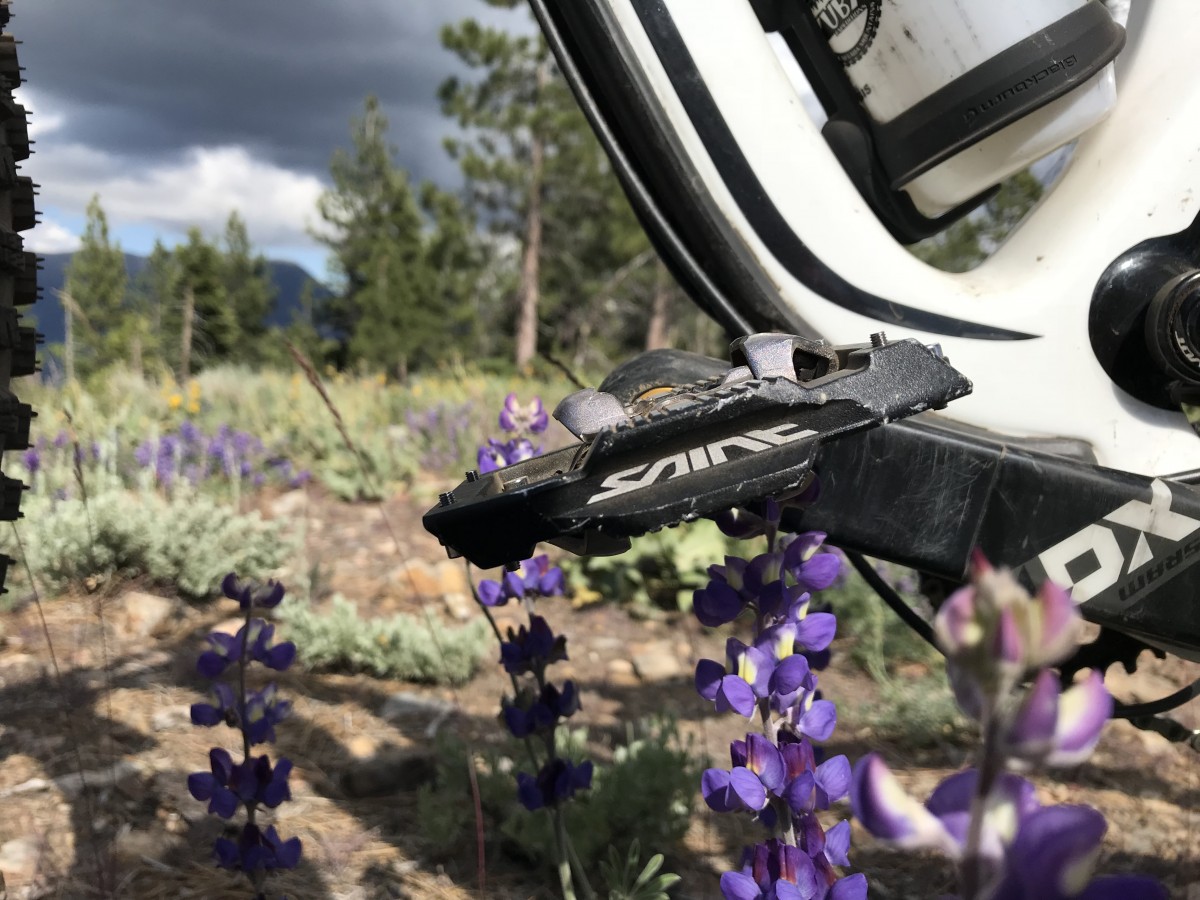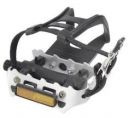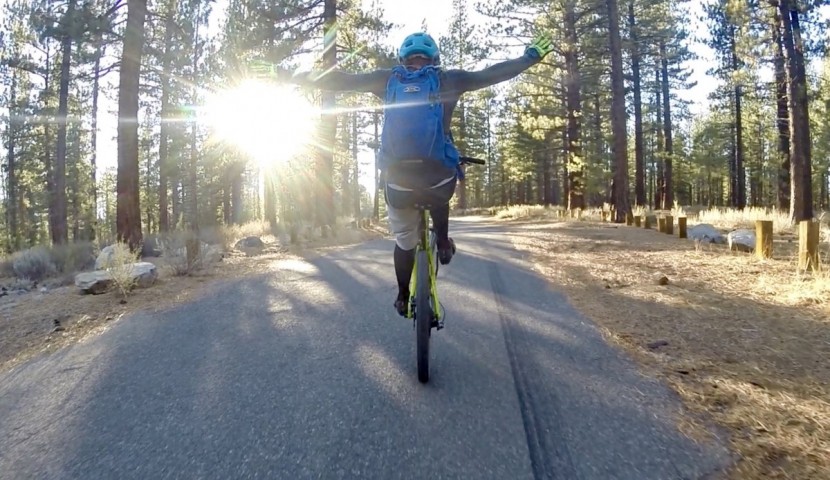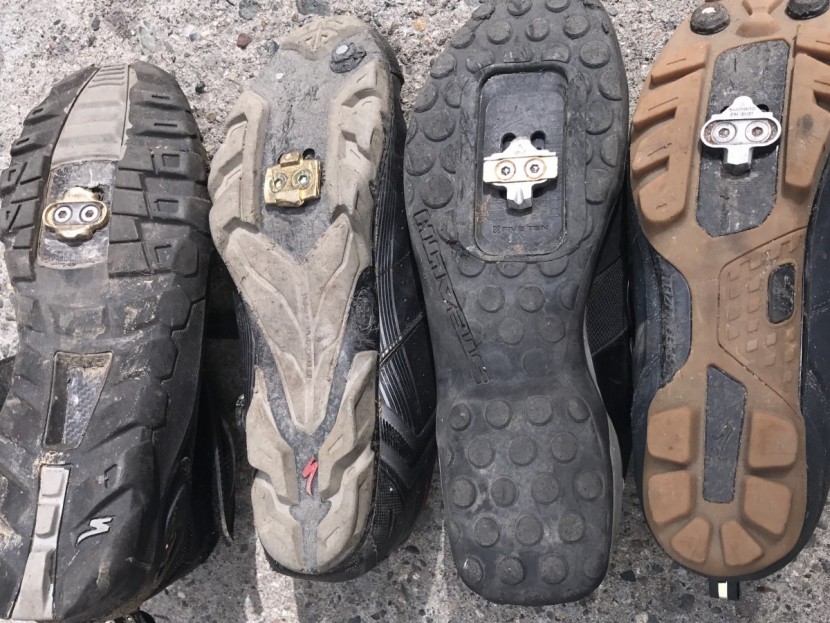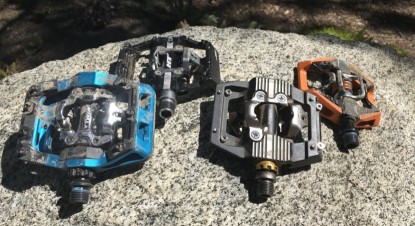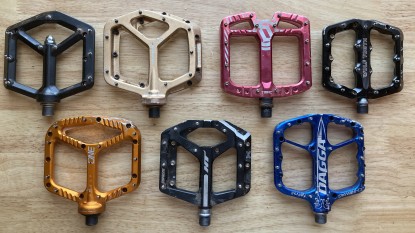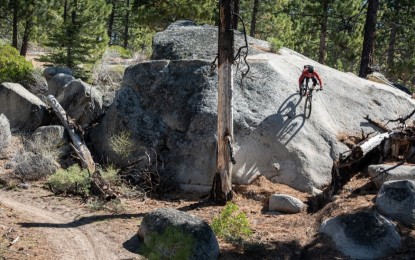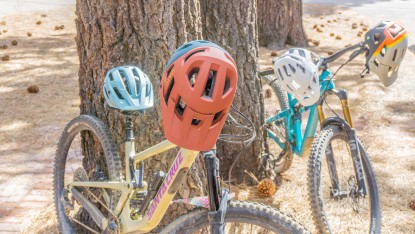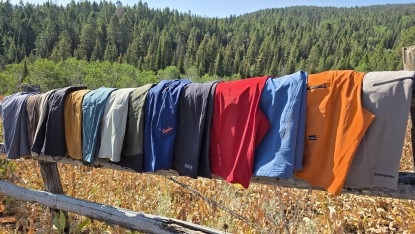Types of Pedals
There are many types of pedals, each tailored to riding styles and trail type. The type of bike and riding you're doing will help dictate which is best, but there's more to it than that. Assuming you're riding a mountain bike, you'll have to decide if you want to clip into clipless pedals (yes, that name is misleading), or ride on flat pedals. This review is comprised entirely of clipless pedals, let's make sure that is what you are looking for. See our best bike pedal review for a rundown on all the different types of pedals.
Clips vs. Clipless
Why are pedals that you clip into called clipless pedals? It has to do with how pedals have evolved over the years. Before modern clipless pedals, which use a cleat on the bottom of the shoe, there were pedals with toe cages that held the foot in place. These pedals made it challenging to take your foot out if you needed to step down.
Clipless vs. Flat vs. Clip-Flat Pedals
Do you want to attach your feet to the pedals or stand on top of them? There are pros and cons to each style, and some pedals offer both options. We recommend trying both and going with what feels most comfortable to you. If the idea of clipping in sounds daunting, or you want to ease into it, you might consider a Clip-Flat pedal, which features a flat pedal on one side and a clipless pedal on the reverse. You can also choose an adjustable clipless pedal that allows you to get out quickly and easily.
Clipless
Thirty years ago, the idea of clipping into a mountain bike pedal seemed crazy. That's changed, and now it's far more common to see a mountain bike with clipless pedals than without. The benefit of having your foot attached to the pedal, namely an increase in efficiency and control, was evident. The danger of being attached can feel daunting to the uninitiated, but it quickly subsides.
Technological leaps have made the pedals safer and far more user-friendly. A simple heal twist to release your foot is much easier than pulling it out of the old style cage. In fact, many riders using a modern clipless pedal can get their foot to the ground faster than using a flat pedal. Clipless mountain bike shoes have recesses in the sole allowing the cleats attach to and not protrude making walking or hiking feel similar to wearing a hiking shoe. Here's a summary of the pros and cons:
Pros- Overall more efficient.
- Can give you more control of your bike.
- Can give you more power with each pedal stroke.
- Allows you to get your foot in the same position on the pedal every time.
Cons
- There is a learning curve to using clipless pedals.
- Can initially delay getting a foot on the ground.
- May take longer to position your foot on the pedal correctly.
Flats
Flat pedals have also been evolving to be more user-friendly. Newer styles feature excellent traction and pair well with sticky soled shoes, giving riders control and confidence. Here are the major reasons to ride, and not to ride, flats:
Pros- Can be best for learning bike handling skills and trying new techniques and terrain.
- Forces you to learn appropriate pedal pressure with your feet.
- Allows you to bail from your bike quicker.
- There is no learning curve, just install them and go.
Cons
- Feet can be bounced off the pedals accidentally in rough terrain.
- You cannot use your feet to pull upwards on the pedals when climbing and jumping, which reduces efficiency.
Many riders can ride on either type of pedal safely, and each style of pedal has advantages and disadvantages. Listen to your friends, your local bike shop and do some research online, but ultimately, the choice is yours.
Other Pedal Considerations
If you've decided that you're indeed interested in clipless mountain bike pedals, then you are in the right place. There are just a few other details that are important to consider before you start selecting the best pedal for you.
Cleats
Cleats are included with your clipless pedals, so don't worry about searching out and buying them separately. In some cases, cleats that can be customized by reversing them or mounting them on opposite feet. Many brands of pedals offer aftermarket cleats that will change the float or release properties, allowing you a customized feel.
Intended use
What type of riding do you do? Hitting the trails or hucking the jumps? In general, cross-country riders won't need quite as much surface area and can get by with smaller, lighter weight pedals. Are you an aggressive trail rider looking to test some limits? Trail and all-mountain riders are going to benefit from a bit more substance beneath their soles. Mini platforms are a good place to start — they'll provide quicker entry and a much more solid base for your pedal stroke. More aggressive and gravity oriented riders are going to tend toward the larger, traction pin laden pedals. These are basic guidelines, but they're also generalizations, keep reading to hone in on what might work best for you.
Adjustability
The most often discussed type of pedal adjustment is release tension, and we feel its fairly important. Finding a release tension that you're comfortable with will help you feel confident, knowing that you can get out of the pedal easily but not too easily. Some manufacturers provide a one tension works for all product. We find that this works for most. Riders on either end of the strength or weight spectrum might prefer the ability to customize release tension. Float adjustability is another consideration and refers to how far your heel will have to move before initiating the release. Most of the pedals we review offer some float adjustment, most often by changing the cleats or their mounting orientation. Lateral float is another consideration. Some pedals allow your entire foot to move side to side a few millimeters, it can feel disconcerting for some but is touted as being beneficial for the knees.
Profile Height
Profile Height is the distance measured from one surface of the pedal to the opposite. The lower the profile height, the lower the rider can sit on the bike at their proper saddle position. This helps to provide a lower center of gravity and lessens the chances you'll strike that pedal on a rock or trail feature.
Q-Factor
Q-factor is the width of your stance on the bike, measured from the center of one pedal cleat to the center of the other pedal cleat. It dictates the ergonomics of your hips, knees, and ankles while you pedal. This is affected by the crank, bottom bracket, and pedal dimensions. With a narrower wheel and tire to work around, road and cross bikes tend to have a narrower Q-factor than mountain bikes. You'll see measurements for a pedals Q-factor, and that refers to how much that pedal will increase your stance width from the crank arms. Some pedals are available with different sized axles to help a rider customize their Q-factor.
The advantage to a wider Q-factor is that it gives you more leverage from side-to-side when sprinting and cornering. On a mountain bike, especially a downhill bike, this can be advantageous. The downside is that the wider your Q-factor, the more likely you are to clip a pedal in a turn. There is also a slight decrease in pedal efficiency as the Q-factor widens. It is widely acknowledged that a narrower Q-factor is more efficient.
Shoes
Certain types of shoes are designed to work better with certain types of pedals, so it's wise for you to consider your shoe and pedal purchase simultaneously. If you're prone to getting rowdy on the bike, (you know who you are), you'll benefit from a bit more shoe and pedal. We think of clipless mountain shoes in these three broad categories.
Related: Best Mountain Bike Shoes
Cross-country mountain bike shoesThese are designed with a stiff midsole for optimum power transfer and tend to be constructed of breathable, lightweight materials. They are often less durable than Enduro or Gravity oriented shoes and have a midsole measurement of 85-95mm.
Enduro mountain bike shoesThese shoes are designed for pedal efficiency, but also walkability and foot protection. You'll typically see lugged soles or sticky rubber instead of the hard plastic outsole you'd see on cross country shoes, they range in midsole size from 95-105mm.
Downhill Mountain Bike ShoesThese shoes are heftier, providing protection and traction above all, they'll typically have a bit more flex in the sole to help the riders foot conform to the shape of the pedal. Downhill shoes are 100mm and more in the midsole.
Price
You can find a set of clipless pedals with cleats included for as low as $30 and as much as $450. Typically, the more you spend, the less (weight) you get. If weight isn't your main concern, you'll probably save money and be happier with the performance of your pedals.
There are bargains out there, like the Shimano M530 SPD and there are $180 pedals that we feel are worth the money. Pedals make up two of your five points of contact with the bike. We believe that being too frugal in this department can lower the overall quality of your ride.
Conclusion
We hope that our research and testing helps you choose the best pair of pedals for your riding style and needs. Options are endless, but following the basic guidelines we have laid out can help you make a solid purchase.

